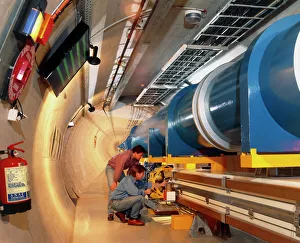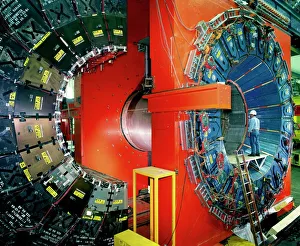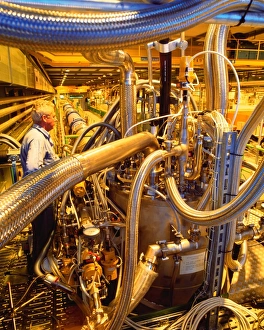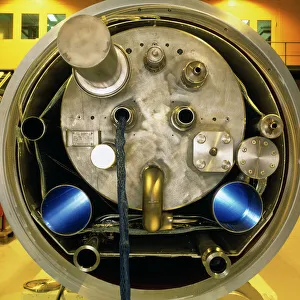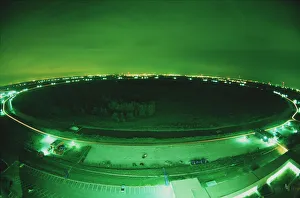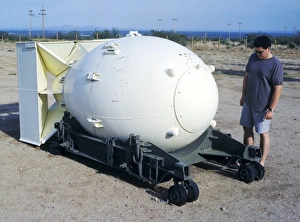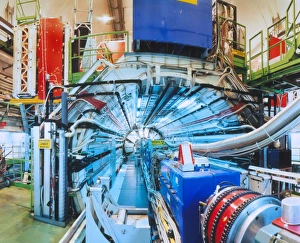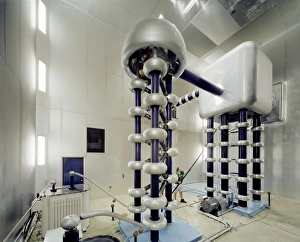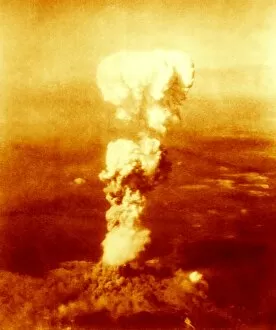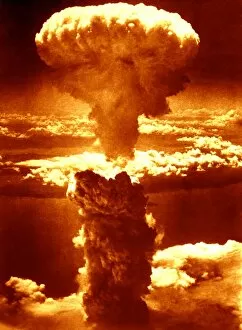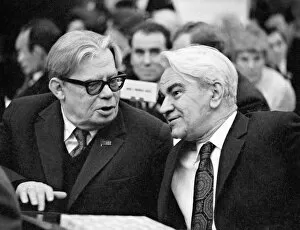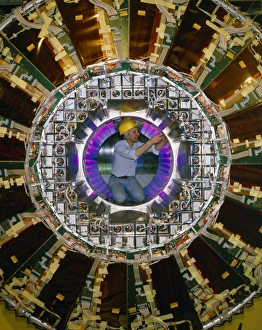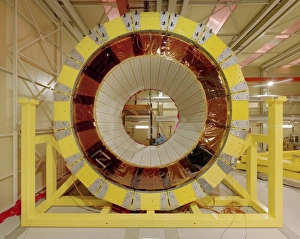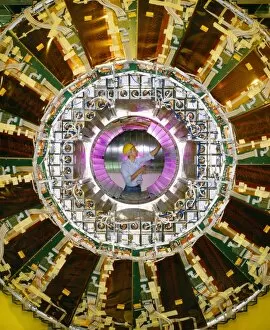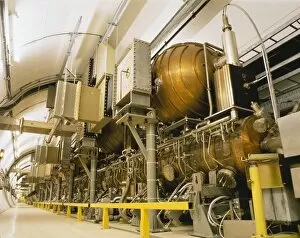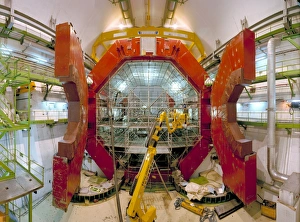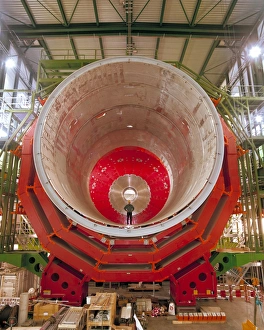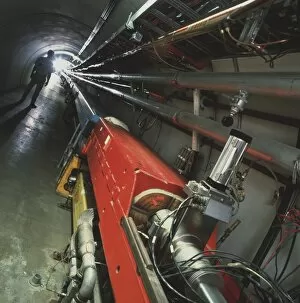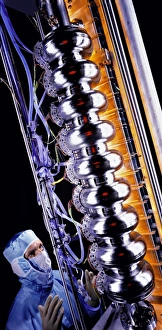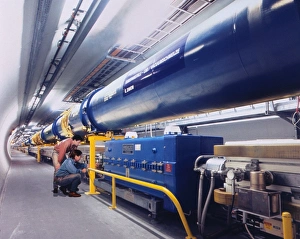Nuclear Research Collection
"Nuclear Research: Unveiling the Mysteries of the Universe" Step into the captivating world of nuclear research
All Professionally Made to Order for Quick Shipping
"Nuclear Research: Unveiling the Mysteries of the Universe" Step into the captivating world of nuclear research, where scientists push boundaries and unravel the secrets of our universe. This mesmerizing mock-up of the Large Hadron Collider at CERN showcases humanity's relentless pursuit of knowledge. The CDF particle detector at Fermilab stands as a testament to our quest for understanding subatomic particles, while the HERA accelerator ring at DESY propels us closer to unlocking nature's enigmas. The LEP collider tunnel, also located at CERN, beckons with its promise to reveal hidden dimensions. Witnessing technicians meticulously testing magnets for the awe-inspiring Large Hadron Collider reminds us that every discovery is built upon precision and dedication. The H1 particle detector captures elusive particles in their fleeting existence, offering glimpses into realms previously unseen. At Fermilab's Tevatron particle collider, energies collide in a symphony of scientific exploration. Behold the end magnet for the Large Hadron Collider – an engineering marvel poised to propel mankind towards unprecedented breakthroughs. The LEP particle collider awaits its turn on this extraordinary journey through time and space. Yet amidst these remarkable achievements lies a somber reminder – an atomic burst over Hiroshima in 1945 forever changed history and ignited debates about harnessing nuclear power responsibly. Within this labyrinthine realm lies hope; hope that we can learn from past tragedies and channel our knowledge towards peaceful applications. The L3 particle detector at CERN embodies this aspiration by enabling discoveries that transcend borders and unite nations in pursuit of truth. Nuclear research holds immense potential - it has shaped our understanding of reality while simultaneously challenging conventional wisdom. As we delve deeper into this fascinating domain, let us remember that it is not just about unraveling mysteries but also about using knowledge wisely for a brighter future.

